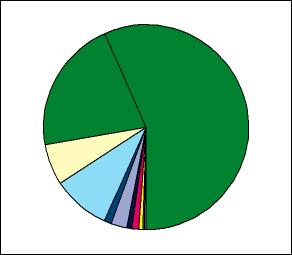| ESE424 : The Class : Understanding : Types :Mild Disabilities | |||||
What are "mild" disabilities?
This lesson seeks to develop your knowledge about the types of students we will be studying for the remainder of the course. We generally refer to this group as students with "mild disabilities." The title of this topic is an intriguing question and one that many professionals in the field of special education are asked frequently, yet few can provide a cogent answer. Often, when asked,. the professional will resort to listing a number of disabilities that they consider to be "mild."
In this topic we will:
What does "mild" mean?
The term mild disabilities can be interepreted in many ways. Each interpretation
leads the listener or reader to a create a different set of assumptions
about this population of students. The term is widely accepted by both
professional and lay communities yet there is no basis for using this
term as there is no evidence to support this as a term to describe a population
of students receiving special education services (Ysseldyke, Algozzine,
& Thurlow, 2000). Just what, then is a mild disability?
Mild can mean one of several different things. The following definitions of "mild" were extracted from the Random House Webster's Dictionary (1993). Click the buttons below to read about each definition and see how well it describes the students we will be learning about..
Which types of disabilities are considered "mild"?
From your reading, you have learned that children with mild mental retardation, emotional and behavioral disorders, and those with learning disabilities are often referred to as children with mild disabilities. Click on the graphic below to review some basic information about these disabilities.
Use your mouse to point to each area of the chart below. When a link is available, your cursor will turn to a pointing finger. Click to learn more information about the children represented by that section of the chart

Percentage of Children Receiving Special Education by Disability
Learning Characteristics of children with mild disabilities.
One of the most common learning characteristics of children with mild disabilities, indeed all disabilities, is that they have difficulty mastering academic content. In addition, these students frequently have difficulty with social behaviors and in finding appropriate work once their formal schooling ends (Olson & Platt, 2000). Because the children with mild mental retardation, emotional and behavioral disorders, and learning disabilities have needs that are not as severe as other children with disabilites, and because they share many of the same characteristics, we tend to group these children together as we discuss "mild disabilities." These children may have one or more of the following learning characteristics:
Summary
As you can see, the term mild disabilities leaves much to be desired. We will spend much more time discussing specific disabilities in later topics. It is helpful, however, to remember that there is a great deal of carryover between disabilities and, for this reason, you may have students who been shifted between diagnoses during their educational career. This, if nothing more, testifies to the lack of precision in our definitions.
Once you have completed this lesson, you should:
Go on to Web
Activity 1: How many children with mild disabilities are in our nation's
schools?
or
Go back to The Class
Page
E-mail the instructor at Larry.Gallagher@nau.edu
Web site created by the NAU OTLE Faculty Studio
Copyright 1998 Northern Arizona University
ALL RIGHTS RESERVED
